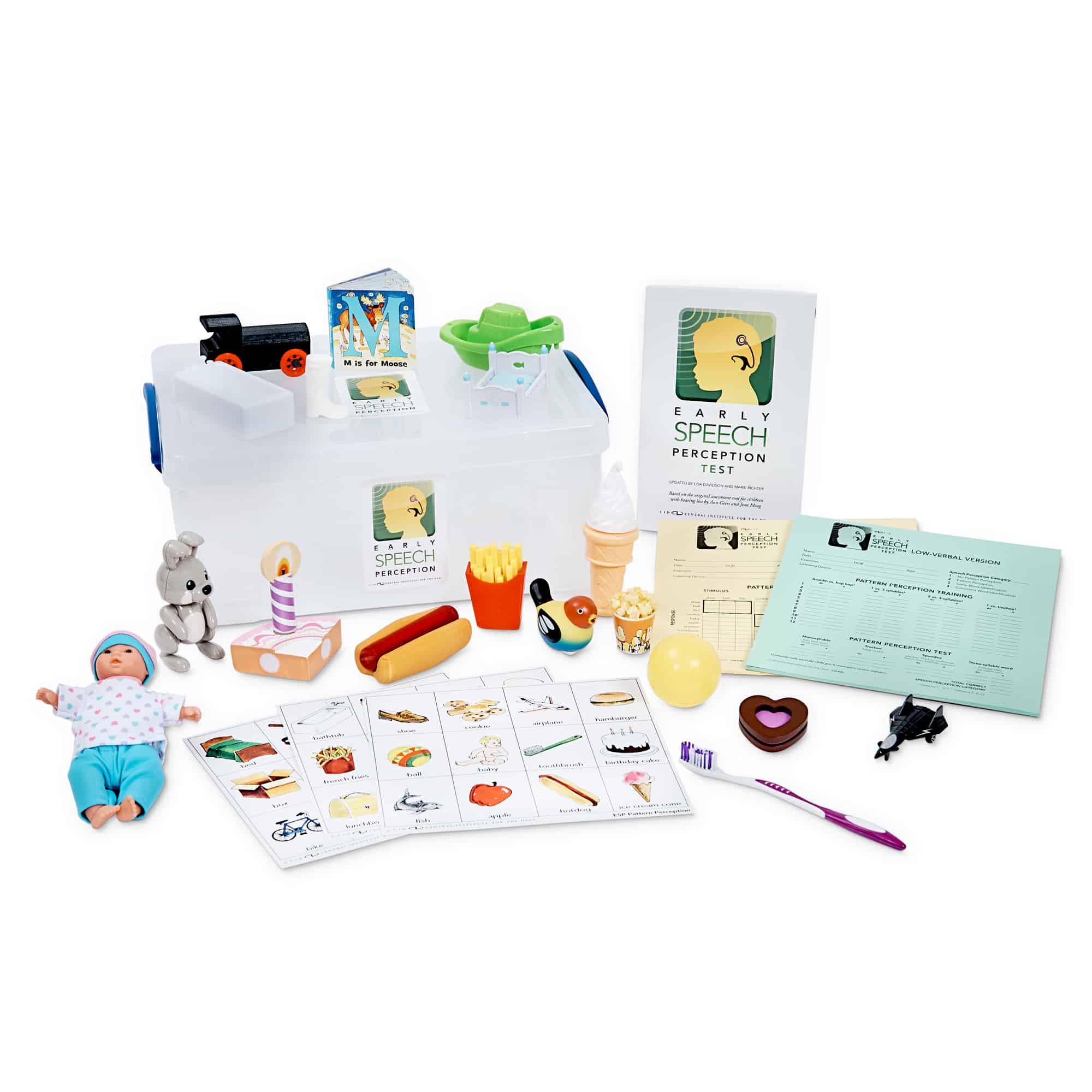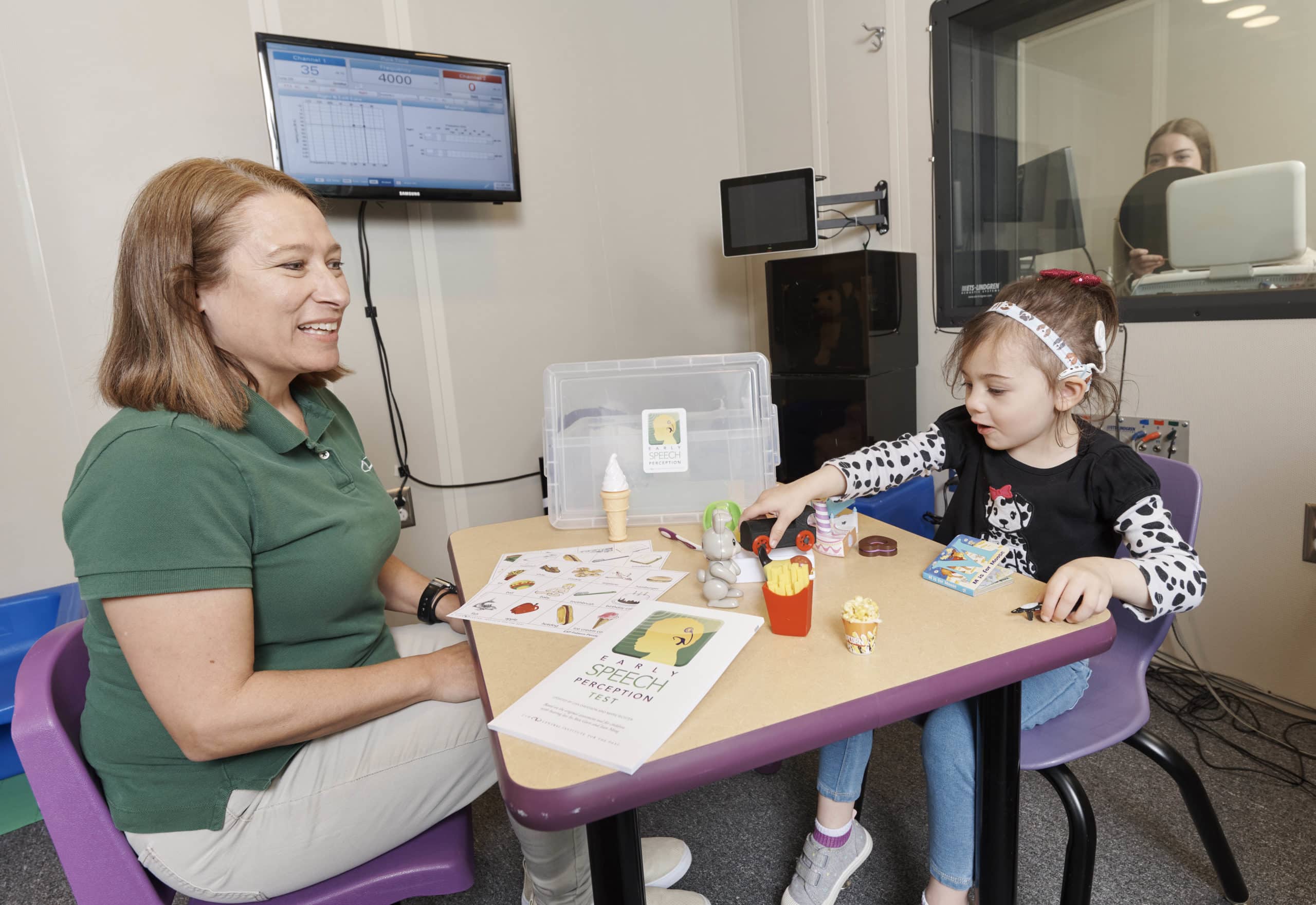How early is too early for speech perception tasks? With the CID ESP – Early Speech Perception test, the early language learner can be an early bird.

First, let’s break down the formal ESP: In clinic, the CID ESP is a speech perception measure now included in the hierarchy of the Pediatric Minimum Speech Test Battery (PMSTB) protocol. ESP test validity was obtained with children who were 4 to 15 years old and had a pure tone average in the profound range. It wasn’t the age of the child that mattered – but the level of language experience and auditory training with visual, auditory + visual and auditory-only methods. The ESP standard version employs a point-to-picture task for older children. The ESP low-verbal version requires the child to manipulate toys. These two testing methods enable you to work at a language level appropriate to the child. Then you can complete the standard or low-verbal ESP method, then read the manual! The methods of moving through pattern perception skills to monosyllabic word discrimination are outlined well there.
As a result of mandated newborn hearing screenings, many children enter today’s audiology clinics at a much younger age. Accordingly, these children may not have the language or cognitive skills to complete formal speech perception testing. When early identification and access to language supports lead a child to your audiology clinic before he is old enough or mature enough to do the ESP test, you will likely want to postpone formal speech perception tasks. The ESP provides alternative methods for test administration at such a child’s skill level.
The ESP offers fun training activities that can be used as a precursor to formal speech perception testing. Use it informally as soon as the child can learn the conditioned play task. As long as they have emerging play and wait skills, children at or under 2 years old can play through the training tasks. These tasks are highly flexible and great for collecting data to get to a starting point for auditory training and/or to show informal effects of auditory training. The toys in the ESP kit can provide much-needed sensory experiences that keep a child engaged, particularly in cases where rote speech perception tasks do not. Selecting toys based on the child’s familiarity with them makes the task more meaningful than repeating words like “mew” (shout out to CID’s W22 list for adults!).
A child with early or emerging language skills may begin the auditory training experience with markedly dissimilar sound patterns and progress to more difficult discrimination tasks as his language sophistication grows. The cues you give prior to the beginning of the test can help determine if the item is familiar to the child. Consider using supports such as lipreading and other visual cues in the beginning, especially to help identify familiar items.
The ESP training tasks could begin with playing at pattern perception in live voice. An audiologist may have the child move a train toy toward a toy bucket when he hears a continual /ah/ sound — or encourage the child to jump a bunny into a bucket after hearing a staccato “hop hop hop.” Playing within a small set of two items can be motivating for a child with early verbal skills! Modifying the training task and keeping it fun may be the catalyst he needs to identify stimuli differences and begin the journey to formal speech perception testing.
As audiologists, we want auditory training to build success toward developing language skills.
- Use a visual or auditory sandwich strategy to familiarize the child with each task.
- Try using bone oscillator vibration or hand-over-hand on the throat, paired with voice to accentuate the pattern lengths.
- Start with monitored live voice (and grab a play microphone if you can!).
- On the path toward more formal testing, transition from live voice toward monitored live voice then recorded stimuli.
- Move around the room or sit on the floor while training informally. Movement may encourage participation.
- Engage parents/caregivers in the training task.
- Build upon the time spent in the task: The formal ESP may take 20 minutes, but you can start with 5 minutes in training!
- Pretend to eat the ESP food toys. (They look realistic – YUM!)
- Pair the pattern differences with tactile movement along the child’s arm.
- Allow older children to choose the toys in the set or to use a pointer with the picture cards. They may even find pictures in magazines to use.
The end goal of obtaining formal speech perception data remains the same. In the early stages of language learning, an informal approach to the ESP can playfully lead steadily toward category 4 discrimination of pointing out monosyllabic differences such as “bird” versus “ball.” After all, a task that starts out as fun may end up building language.
Click here to learn more about the ESP.

Kathy Holtman is a Pediatric Audiologist. In addition to working at CID, Dr. Holtman has practiced at Ohio State University Medical Center, University Hospitals of Cleveland/Mednet, Cleveland Speech and Hearing Clinic and Cochlear Corporation.












